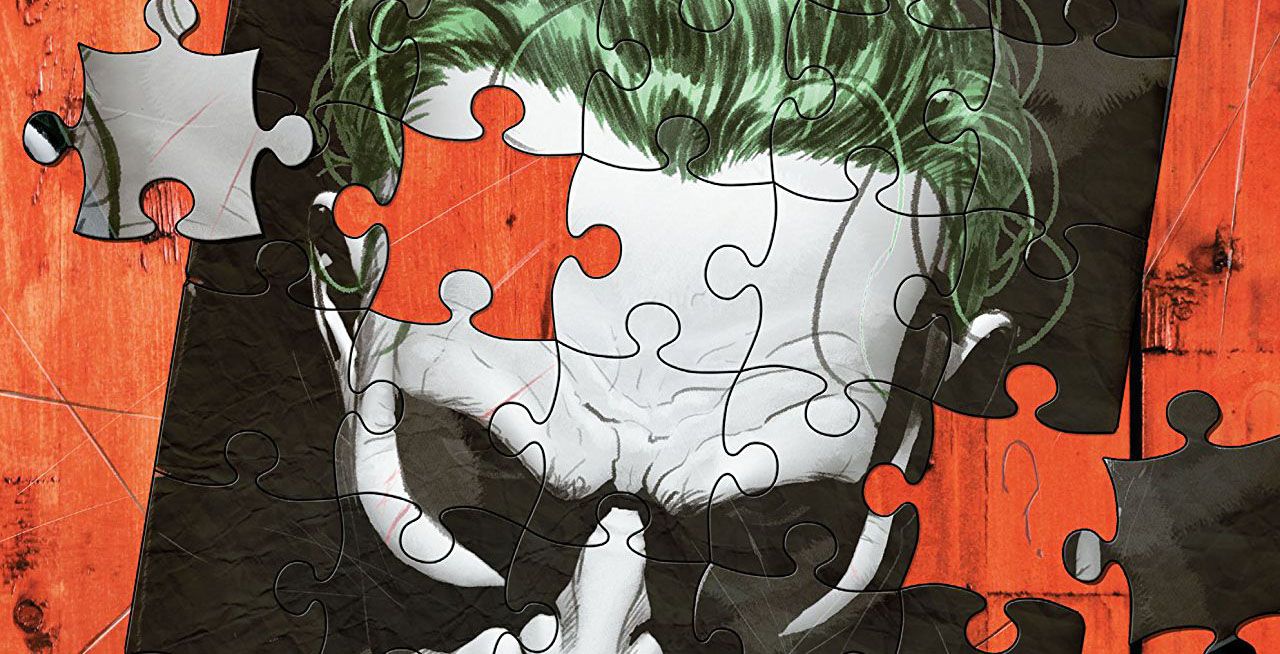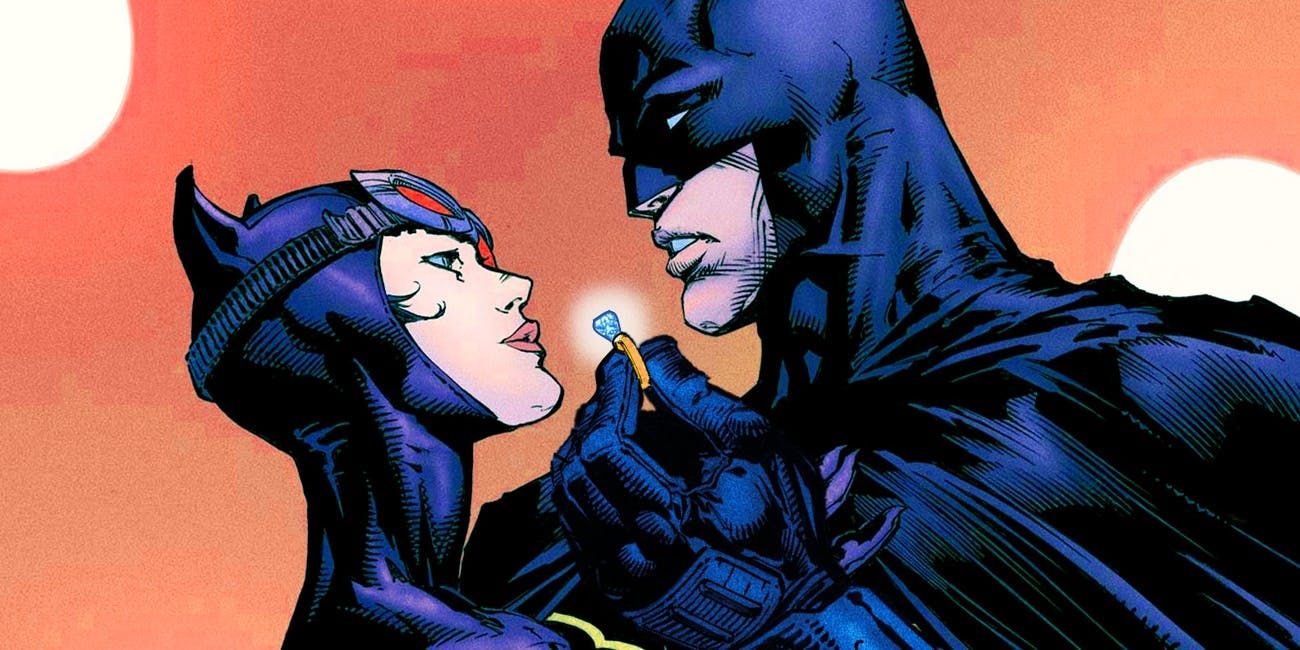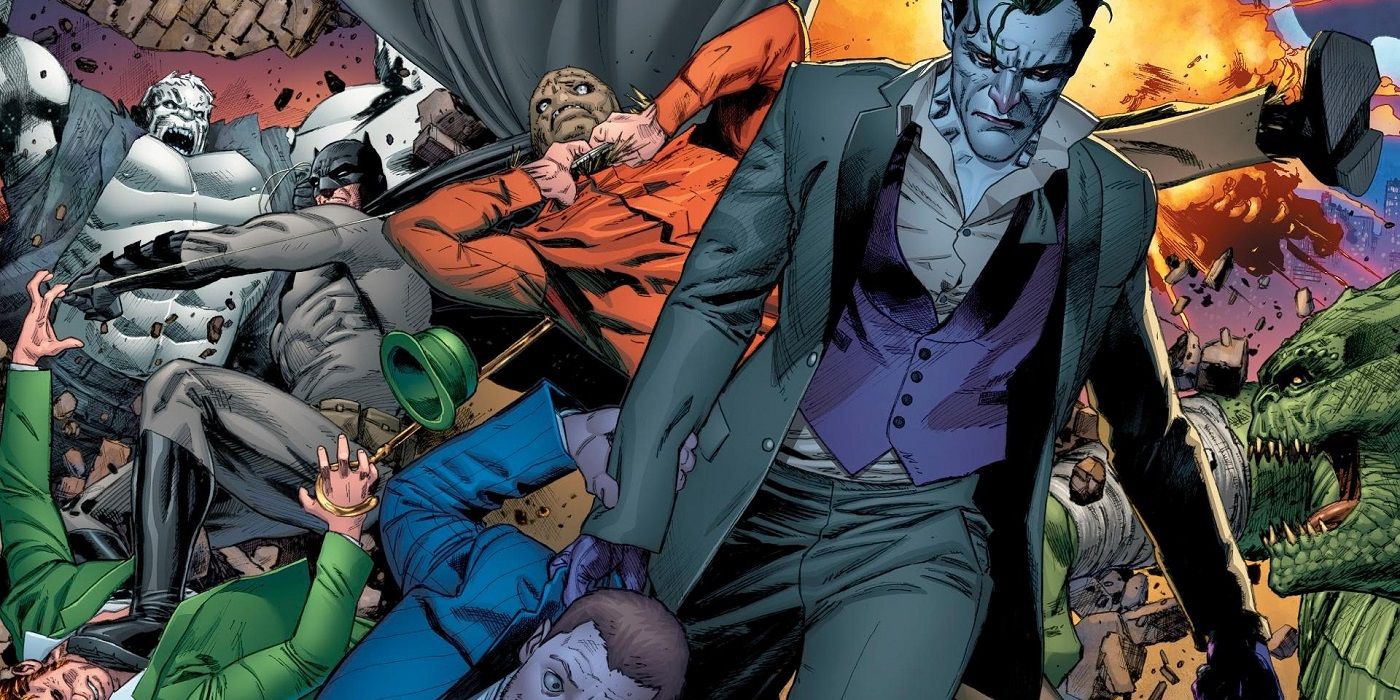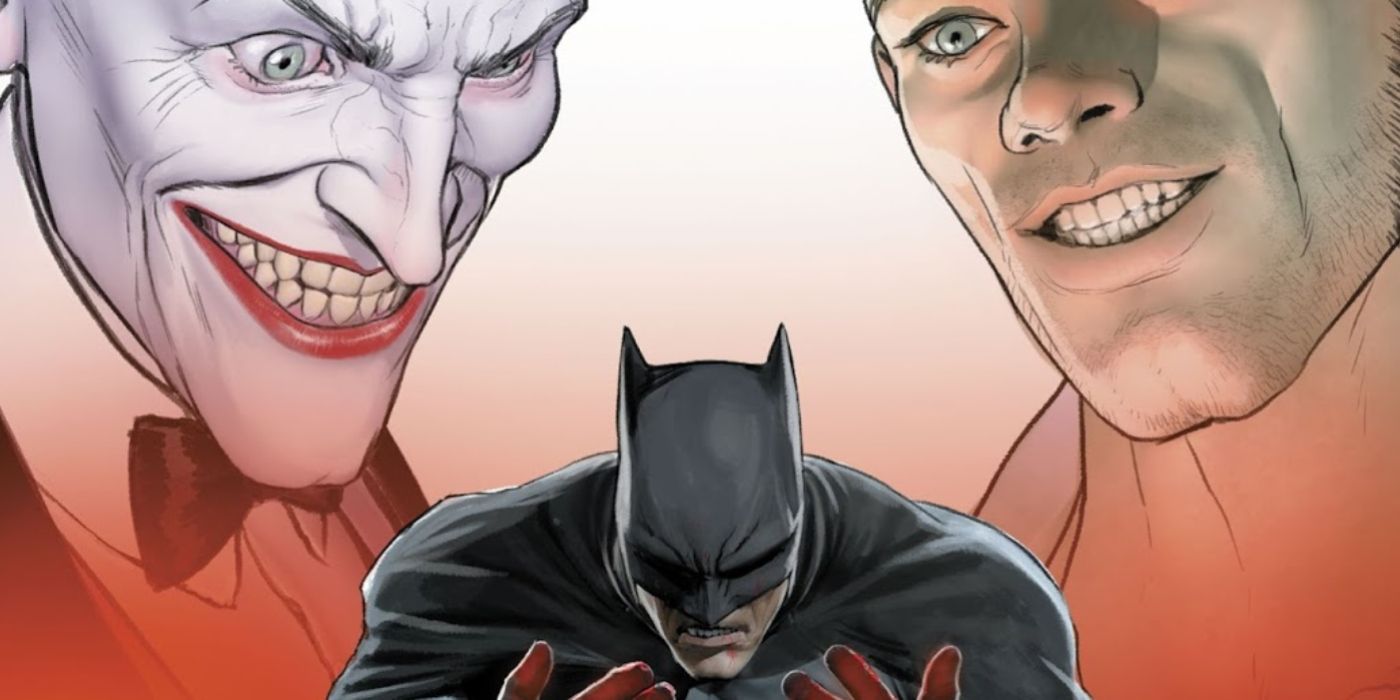Long before Gotham City was consumed by "Joker War," the Clown Prince of Crime helped fuel a different bloody conflict as the emotional centerpiece of Tom King's long run on Batman in 2017's "The War of Jokes and Riddles." Drawn by Mikel Janin, colored by June Chung and lettered by Clayton Cowles, the eight-issue storyline had the Joker and Riddler go to war against one another with all of Gotham caught in the crossfire. Set largely during Bruce Wayne's second year as the Caped Crusader, the fledgling crimefighter teamed up with Jim Gordon and his occasional enemy Kite-Man to prevent any more innocent lives from being lost.
Here is an overview of the storyline and how it helped inform the remainder of King's run on the superhero as well as the overall Batman mythos.
The Lead-Up
"The War of Jokes and Riddles" is primarily a story-within-story recounted by Bruce to Catwoman shortly after he proposed to Selina Kyle previously in King's run. Unsure if she was willing to take the plunge with her longtime beau with that level of marital commitment, Selina and Bruce continued their romantic relationship as she mulled over the proposal. One night, Bruce decides to tell Selina about the conflict and a pivotal moment during the war that would rock him to his core by its eventual end.
In a nod to the New 52 era, the Riddler had been incarcerated since his villainous role during Scott Snyder and Greg Capullo's 2013 storyline "Zero Year," after plunging the entire city into chaos. The start of Snyder and Capullo's story had also provided a possible new origin for the Joker, with the villain resurfacing in Gotham as a considerably changed man since his last appearance while many other members of Batman's growing rogues gallery would appear throughout the fiery conflict as Bruce continued to settle into his role as the Dark Knight.
The War
Running from Batman #25-32 (v0l. 3), the story had Riddler break out of prison by blackmailing his guards while the Joker had become murderously morose, unable to even crack a smile as he sought to find anything that would make him laugh. Riddler approaches Joker with a proposition to kill Batman together as a mutual threat and the thing that has deprived the both of them of the joy that normally came with their criminal activities. Spurning the Riddler's offer, the Joker nearly kills him, resulting in a war breaking out across the city between their respective factions for months.
As the conflict escalates, Batman approaches small-time criminal Chuck Brown to enter the war as a mole on the Joker's side. Learning of this, the Riddler poisons Chuck's son with a poisoned kite causing him to swear revenge and take on the supervillain persona of Kite-Man in a nod to the Silver Age character created by Bill Finger and Dick Sprang in 1960's Batman #133. Kite-Man proves invaluable in the Dark Knight ending the conflict, infiltrating the Riddler's headquarters and nearly killing the villain in memory of Chuck's son before being stopped by the Joker, with the irony that he stopped Batman from committing murder finally snapping the Clown Prince of Crime from his funk as he laughs maniacally.
War's Aftermath
The revelation that not only did Batman almost willingly commit murder but owed the Joker for stopping him was one that weighed heavily on Bruce, even years later. Touched by Bruce bearing his soul to her by confessing to his lowest moment as Batman, Selina decided to accept his marriage proposal, setting up the couple for the tumultuous events that would continue for the rest of King's run as Bane's master plan to break the Dark Knight on every level were revealed.
With the relationship between Bruce and Selina serving as the focal point for King and Clay Mann's upcoming maxi-series Batman/Catwoman, the level of emotional vulnerability Bruce has shown will certainly inform the characters as the story will explore the two's dynamic in the past, present and future. And after providing the DC Rebirth era updated origin for Kite-Man, the character's increased prominence would lead to him appearing as a regular character on the animated series Harley Quinn as an unlikely love interest for Poison Ivy, complete with character retaining his catchphrase "Hell yeah!" from King and Janin's story.




